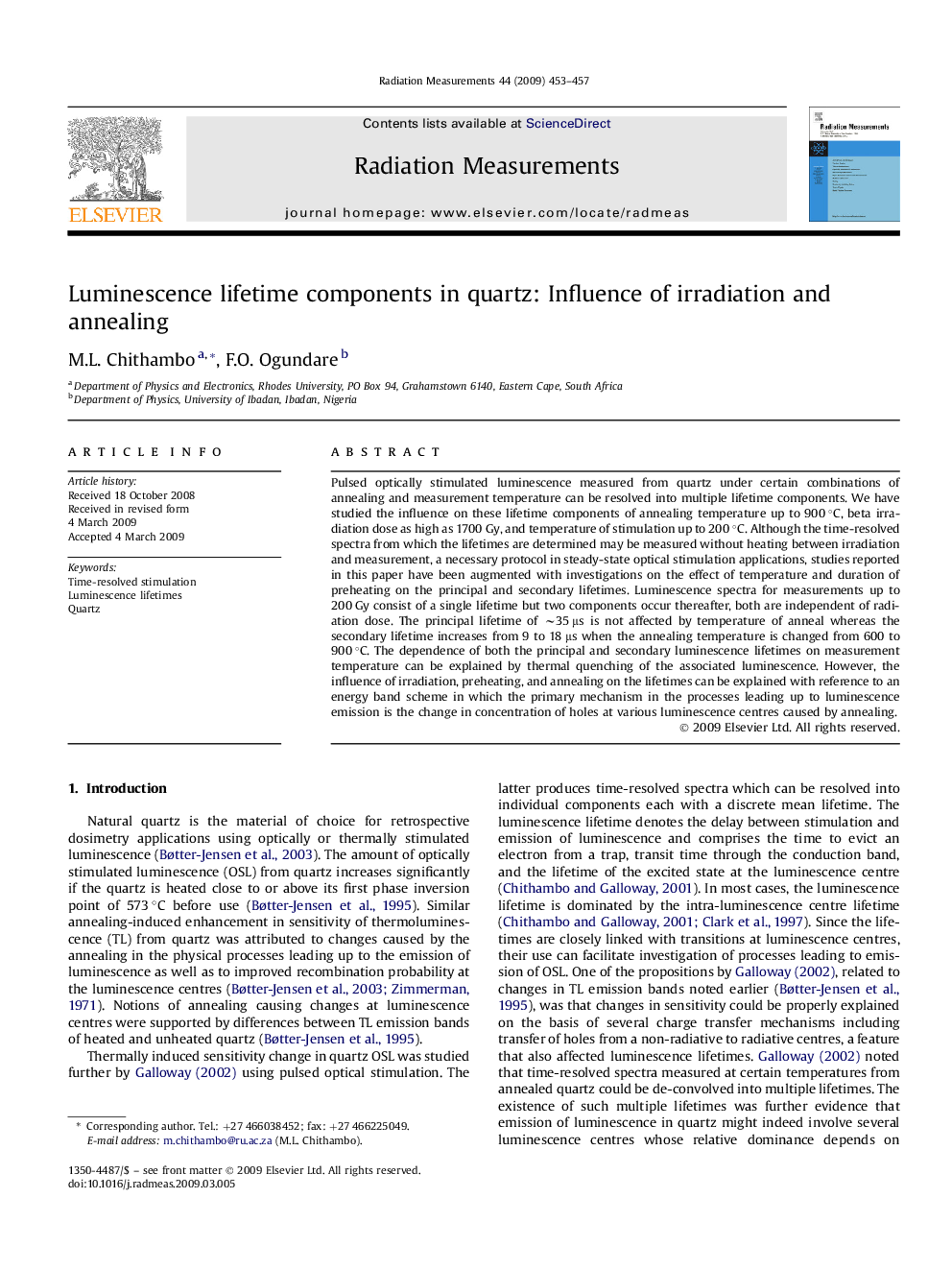| Article ID | Journal | Published Year | Pages | File Type |
|---|---|---|---|---|
| 1881206 | Radiation Measurements | 2009 | 5 Pages |
Pulsed optically stimulated luminescence measured from quartz under certain combinations of annealing and measurement temperature can be resolved into multiple lifetime components. We have studied the influence on these lifetime components of annealing temperature up to 900 °C, beta irradiation dose as high as 1700 Gy, and temperature of stimulation up to 200 °C. Although the time-resolved spectra from which the lifetimes are determined may be measured without heating between irradiation and measurement, a necessary protocol in steady-state optical stimulation applications, studies reported in this paper have been augmented with investigations on the effect of temperature and duration of preheating on the principal and secondary lifetimes. Luminescence spectra for measurements up to 200 Gy consist of a single lifetime but two components occur thereafter, both are independent of radiation dose. The principal lifetime of ∼35 μs is not affected by temperature of anneal whereas the secondary lifetime increases from 9 to 18 μs when the annealing temperature is changed from 600 to 900 °C. The dependence of both the principal and secondary luminescence lifetimes on measurement temperature can be explained by thermal quenching of the associated luminescence. However, the influence of irradiation, preheating, and annealing on the lifetimes can be explained with reference to an energy band scheme in which the primary mechanism in the processes leading up to luminescence emission is the change in concentration of holes at various luminescence centres caused by annealing.
